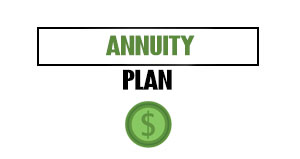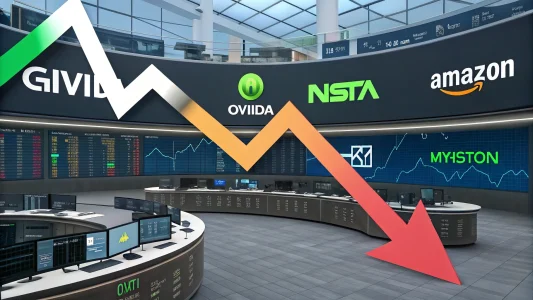These days, it feels like everything is always teetering on the edge, doesn’t it? We face economic storms, inflation that gnaws at our wallets, and job security that feels fleeting rather than guaranteed. During these uncertain times, establishing a solid emergency fund can seem like scaling a mountain in flip-flops. However, in these tough times, a financial safety net isn’t just a good idea; it’s vital.
In a way, your emergency fund is your financial fortress. It shields you from life’s unexpected curveballs. You know, those sudden medical bills, car breakdowns, or job losses that leave you speechless. Your fortress should hold enough money to cover three to six months of living expenses. The problem is, in today’s world, every dollar seems stretched thinner than ever, so reaching that goal can be difficult.
To illustrate this, a recent WalletHub survey paints a stark picture of many Americans’ struggles. Over half of us are unable to save because of our income. For 44% of us, inflation is a relentless foe. In addition, 34% of Americans are burdened by debt.
Shockingly, over a quarter of people admit they never contribute to their emergency fund. And, for an emergency, nearly one in five couldn’t come up with $1,000 in cash in 24 hours. Quite sobering.
It’s not all bad news, though. Even in these uncertain times, you can still build that financial fortress brick by brick. It requires strategy, discipline, and a healthy dose of realism. So, let’s break it down.
Table of Contents
Toggle1. Shine a Light on Your Finances: The Reality Check
Before anything else, you need to assess your financial situation. In particular, identify your income, expenses, and debt. Do you know where your hard-earned money is actually going? Keeping track of your spending, even for a month, can be eye-opening. Eventually, you’ll discover that many of these small “treats” add up to much money.
The sooner you know where the leaks are, the sooner you can patch them up.
2. Crafting a Realistic Budget: Your Blueprint for Success
When you identify where your money is missing, you can create a budget aligning with your financial goals. Sort your expenses by essentials, such as housing and groceries, and non-essentials, such as dining out and entertainment. Allocating a specific amount to each category will leave some room for savings.
Remember, the goal isn’t deprivation. Instead, you should prioritize building your emergency fund by making intentional choices.
3. Set Your Sights, But Don’t Aim for the Moon (Right Away)
We all know the magic number: three to six months’ worth of expenses. However, you can start small if you find that overwhelming. You can think of it as building a mini-fortress first. Initially, aim for $500, then $1,000. It only takes a small cushion to make a big difference.
Eventually, you can gradually expand your fortress as your financial situation improves.
4. Jumpstart Your Savings: Maximize Bank Bonuses and Interest
Some banks offer up to $3,000 in cash bonuses for new account openings or referrals. You can quickly add to your emergency fund by taking advantage of these offers. If you want to grow your savings further, seek online banks that typically offer higher interest rates.
To stay in control, set up separate accounts for your savings for different purposes, such as an emergency fund. That way, you won’t have to dip into your reserves for non-essential expenses.
5. Put Your Savings on Autopilot: The Silent Worker
When it comes to saving, automation is your best friend. You should set up an automatic transfer to your emergency fund every payday from your checking account. Even if you contribute just $20 monthly, it will quietly add up over time. It’s like having a little robot build your savings while you’re out doing other things.
You might also want to download automatic savings apps. For example, Acorns can handle everything for only $3 per month. The plan includes automatic spare change investing through transaction roundups, automatic transfers, retirement account savings, and banking perks.
6. Trim the Fat: Finding Hidden Savings
It’s time to discuss unnecessary expenses. Why not cook at home instead of ordering takeout? I’d call that a win. Are you canceling unused subscriptions? That’s another victory. Are you using coupons and shopping for discounts? You’re a savvy saver! Opting for free entertainment? Brilliant!
Don’t forget that every dollar you save can go straight into your emergency fund. It’s like finding hidden treasure in your own budget.
Use an app like Rocket Money or Trim to make this even easier. In addition to canceling services, Rocket Money Premium can also negotiate subscription refunds on your behalf. Trim communicates with users via text message: It scans their bills and texts them to ask if they would like to cancel any subscriptions it finds.
7. Unleash Your Inner Hustler: Finding Extra Income
You must think outside the box if your regular paycheck doesn’t cover your needs. After all, side hustles can be a game-changer.
Think about renting out a spare room through platforms like Airbnb or freelancing your skills on websites like Fiverr and Upwork. Additionally, you can create digital products for sale online or invest in dividend stocks to generate passive income. In addition to accelerating your savings growth, you can diversify your income streams.
That extra cash? You can use it to build your emergency fund.
8. Balancing Act: Debt Repayment and Emergency Savings
There is no doubt that debt is a burden. However, make sure your emergency savings aren’t entirely overshadowed. With a small emergency fund, you will not be tempted to use high-interest credit cards, which are only adding fuel to the debt fire.
Start by following the 50/30/20 rule: 50% for necessities, 30% for wants, and 20% for savings and debt repayment. You can also try the snowball method, where you pay off smaller debts first to build momentum, or the avalanche method, focusing on high-interest debts to save money in the long run. Furthermore, you can avoid late fees and maintain your credit score by setting up automatic payments.
Debt consolidation is another option you should consider. Sometimes, debt consolidation can lower your interest rate and simplify your finances by combining multiple debts into a single, manageable payment. As a result, you can pay less interest over time and track your repayment schedule easier. Moreover, debt consolidation can improve your credit score by reducing your credit utilization rate and ensuring on-time payments.
9. Windfalls: Treat Them Like Treasure
Bonuses, stimulus checks, and cash gifts are all golden opportunities. You don’t want them to burn a hole in your pocket. Instead, put a significant portion towards your emergency fund. On your financial journey, it’s as if you have discovered a treasure chest.
If you receive a windfall, prioritize by investing a portion in a safety net for unexpected expenses, such as an emergency fund. Next, consider using some of the funds to pay down high-interest debts, which can save you money in the long run. Lastly, set aside a small amount for personal enjoyment or future investments to balance financial responsibility and reward yourself.
10. Tap Into Your Employer’s Resources: Free Money? Yes, Please!
Employers often provide financial wellness programs, emergency funds, or matching contributions. It’s important to take advantage of employer-provided financial resources, including 401(k) retirement plans, especially if the company offers matching contributions.
Additionally, you can use financial wellness programs for education and tools to help you manage your money better. As a final step, explore any available employee assistance programs or emergency savings options.
If you are not sure, contact your HR department. Depending on your needs, you might find various resources available.
11. Stand on Your Own Two Feet: Financial Independence
According to the WalletHub survey, 22% of respondents expect their family or friends to bail them out financially. However, relying on others for financial assistance is not always a sustainable solution. Now is the time to build your own financial security.
So, take proactive steps towards financial independence by building savings. In other words, it’s about controlling your destiny.
12. Fight Inflation: Protect Your Savings
Inflation is a sneaky thief, eroding the value of your savings. But keeping your emergency fund in a high-yield account is the best option since it offers easy access and competitive returns. If you are looking for a bank or credit union offering deposit insurance, please look for one insured by the Federal Deposit Insurance Corp (FDIC) or the National Credit Union Administration (NCUA).
Banks, credit unions, and fintech companies offer higher yields on savings products than the national average. According to the FDIC’s data from February 2025, the average savings account yield is 0.41%. Often, the top high-yield savings accounts have rates more than ten times the national average.
Generally, online-only banks offer higher rates and lower fees than brick-and-mortar banks for emergency savings accounts. However, fees can drain your emergency fund balance, so it’s essential to compare savings rates and account features.
13. Regular Check-Ups: Adjusting Your Course
Life changes, and so does your financial situation. Every few months, review your emergency fund. Is it possible to increase contributions? Do your goals need to be adjusted?
In short, your plan needs to be reviewed regularly to ensure that it is still relevant.
14. Stay the Course: Patience and Perseverance
Building an emergency fund takes discipline and time in tough times. So, be proud of your small victories and keep reminding yourself why you’re doing it. When you know you’re prepared for the unexpected, peace of mind is priceless.
You may want to consider keeping a regular financial journal or spreadsheet to keep track of your savings and expenses. Alternatively, you can use budgeting apps to track your progress and receive notifications when you reach milestones.
Final Thoughts: Your Financial Peace of Mind
It’s not easy to save for an emergency in uncertain times, but it’s definitely doable. The key to saving is to make small, consistent efforts, find creative ways to save, and stay committed to your goals. By building a savings account, you’re building a sense of security and peace of mind.
FAQs
What is an emergency fund?
The purpose of an emergency fund is to provide readily accessible funds to cover unexpected expenses or financial setbacks. As a financial safety net, it protects you from going into debt in unforeseen circumstances.
Why is an emergency fund important?
In case of unexpected events, it provides stability such as;
- Job loss
- Medical emergencies
- Car repairs
- Home repairs
- Sudden travel needs
Additionally, it prevents the use of high-interest debt, such as credit cards, in times of difficulty and reduces financial uncertainty-related stress and anxiety.
How much money should I have in my emergency fund?
Most experts recommend saving three to six months of essential living expenses. It is important to note, however, that the ideal amount varies according to individual circumstances;
- Job stability. There is a possibility that those in unstable industries may need more.
- Health. It may be necessary for those with chronic health conditions to have a larger fund.
- Family size. In general, larger families require more savings.
- Personal risk tolerance.
There is no harm in having a little emergency fund than none at all. As such, you should save whatever you can.
Where should I keep my emergency fund?
Ideally, the fund should be kept in a safe, liquid, and easily accessible account, such as;
- High-yield savings account. This account offers a higher interest rate than regular savings accounts.
- Money market account. Provides easy access to money and typically higher interest rates.
Generally, money should not be invested in the stock market because of the market’s volatility.
When should I use my emergency fund?
It should be used for genuine financial emergencies, which are;
- Unexpected. Not planned or budgeted for.
- Necessary. Essential for your well-being.
- Urgent. Requiring immediate action.
Examples include:
- Unexpected medical bills.
- Major car repairs that are needed for transportation to work.
- Loss of income.
Here are some examples of when you shouldn’t use your emergency fund;
- Purchases that are not essential.
- Planned vacations.
- Investing.
What do I do after I use my emergency fund?
- Make sure it is replenished as soon as possible.
- Assess your budget and find ways to save more.
- Continue to prioritize saving for emergencies in the future.
Image Credit: Kaboompics.com; Pexels

















